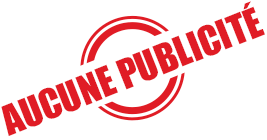The following table sets forth additional disclosures for the fair value measurement of investments in certain entities that calculate NAV per share (or its equivalent).
| | | | | |
| Fair Value as of December 31, | | | |
| 2021 | 2020 | Unfunded
Commitments | Redemption
Frequency | Redemption Notice Period
(plan level) |
| | | | | |
Target Date Funds | $ 1,124,842,053 | $ 714,212,658 | None | Daily | None |
Stable Value Fund | $ 221,333,385 | $ 250,325,749 | None | Daily | 12 months |
Large Growth Fund | $ 149,661,765 | $ 133,938,309 | None | 30 days | None |
Large Equity Fund | $ 96,331,710 | $ - | None | Daily | None |
Large Equity Index Fund | $ 500,513,624 | $ - | None | Daily | None |
SMID Equity Index Fund | $ 203,305,055 | $ - | None | Daily | None |
Broad Market Fixed Income Fund | $ 3,561,023 | $ - | None | Daily | None |
Bond Market Index Fund | $ 187,653,944 | $ - | None | Daily | None |
Non-U.S. Equity Index Fund | $ 18,486,510 | $ - | None | Daily | None |
Note 4 – Plan Termination
Although the Company has not expressed any intent to terminate the Plan, it may do so at any time. In the event of termination of the Plan, all participants would become 100 percent vested, to the extent not already vested, in their accounts and the assets of the Plan, after payment of any expenses, would be distributed to the participants in proportion to their respective account balances.
Note 5 – Federal Income Tax Status
The Internal Revenue Service (“IRS”) informed the Company by a letter dated July 6, 2016, that the Plan and related trust were designed in accordance with the applicable provisions of the IRC. The Plan has since been amended; however, the Company believes the Plan is designed and being operated in compliance with the applicable provisions of the IRC.
U.S. GAAP requires plan management to evaluate tax positions taken by the Plan and recognize a tax liability if the Plan has taken uncertain tax positions that more likely than not would not be sustained upon examination by the IRS or other applicable taxing authorities. The Plan administrator has analyzed tax positions taken by the Plan and has concluded that, as of December 31, 2021 and 2020, there are no uncertain tax positions taken that would require recognition of a liability or that would require disclosure in the financial statements. The Plan is subject to routine audits by taxing jurisdictions; however, there are currently no audits in progress for any tax periods.
Note 6 – Related Party and Party-In-Interest Transactions
Plan assets include investments in funds managed by Vanguard. Vanguard is the Plan’s trustee/custodian and recordkeeper and, as such, transactions with the trustee/custodian qualify as party-in-interest transactions. These transactions are covered by an exemption from the prohibited transaction provisions of ERISA and the IRC. Notes receivable are secured by the vested balance of participant accounts, and, as such, these transactions qualify as party-in-interest transactions. Fees paid by the Plan for the investment management services are included in net appreciation (depreciation) in fair value of investments.
The Plan invests in Ball Corporation common stock, common stock of the Plan sponsor, which also qualifies as a related party transaction. As of December 31, 2021 and 2020, the Plan held 6,899,697 and 7,770,809 shares of Ball Corporation common stock at a value of $664,233,830 and $724,083,983, respectively, along with cash in the Vanguard Prime Money Market Fund Admiral Shares of $1,552,787 and $1,838,170, respectively, which are held in the Ball Corporation Common Stock Fund. During the year ended December 31, 2021, purchases and sales of the Ball common stock were $192,093,305 and $109,450,568, respectively. During the year ended December 31, 2020, purchases and sales of the Ball common stock were $160,493,100 and $125,569,231, respectively. The gain on investment was $17,702,463 and $182,388,184, and the dividends earned were $5,090,121 and $4,938,226 for 2021 and 2020, respectively for the Ball Corporation common stock.

